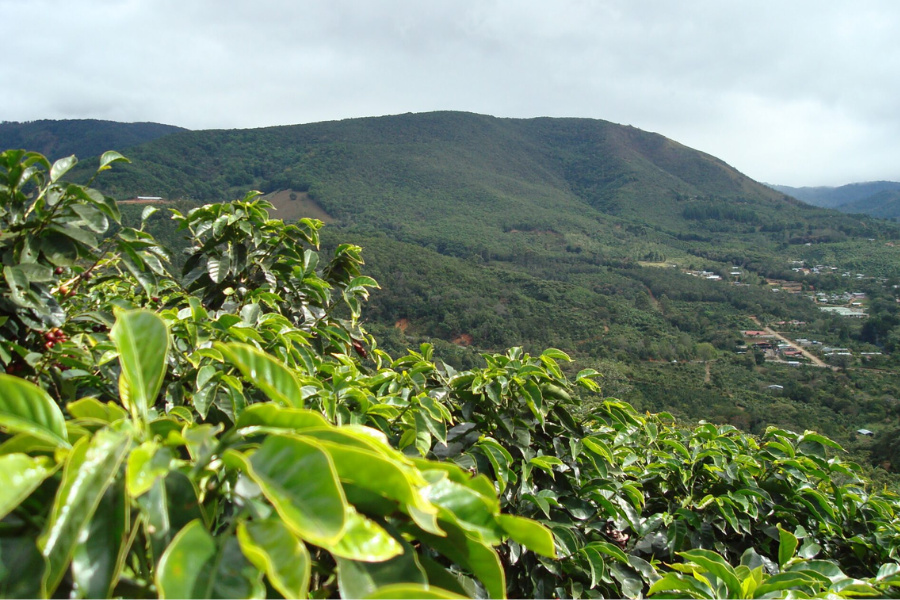“Transform Your Home with a Planterij: The Ultimate Guide to Creating Your Own Gardening Haven”
Introduction
Gardening is more than just a relaxing pastime—it connects you with nature, improves your living space, and can even provide fresh, home-grown food. As more people become environmentally conscious, home gardening has gained immense popularity across all demographics. Whether you have a spacious backyard or a small apartment balcony, creating your own “Gardening Haven” with a planterij is both accessible and fulfilling. This guide will explore everything you need to know about home gardening, from basic plant development to advanced gardening techniques that help maximize your garden’s potential.
Understanding the Fundamentals of Plant Growth

Photosynthesis and Its Impact on Plant Health
Photosynthesis is the lifeline of plants, a process through which they generate their own food using sunlight. Chlorophyll, the green pigment in leaves, captures sunlight and converts it into energy. During photosynthesis, plants absorb carbon dioxide from the air and water from the soil to produce glucose, a form of sugar that fuels plant growth, while releasing oxygen as a byproduct. A planterij can enhance healthy photosynthesis, leading to thriving plants and better oxygen levels for your environment.
Soil Composition and Nutrient Essentials
Healthy soil is the foundation of any successful garden. It provides essential nutrients and physical support to plants. Key nutrients include nitrogen (N), phosphorus (P), and potassium (K), which support everything from leaf growth to root development. In a well-managed planterij, soil health can be improved through organic materials like compost or manure, which enrich its texture and fertility. Well-balanced soil should allow adequate drainage while retaining enough moisture and nutrients for plant roots.
The Science of Proper Watering
Watering your plants is a fundamental part of gardening, but it’s important to strike the right balance. Overwatering can drown your plants’ roots, while underwatering can leave them dehydrated and weak. A planterij can help you manage water distribution effectively. The best approach is to assess the moisture of the soil before watering—only water when the top inch feels dry. In hot weather or during summer, more frequent watering may be required. Ensure proper drainage for potted plants in your planterij to prevent water from accumulating at the bottom, which can lead to root rot.
Designing and Creating Your Ideal Gardening Space
Selecting the Optimal Location for Your Planterij
Choosing the right spot for your planterij is key to your plants’ success. Most plants require at least 6–8 hours of direct sunlight per day. Consider the specific needs of the plants you’re growing—some may prefer partial shade, while others thrive in full sunlight. Observe how sunlight moves across your space throughout the day and arrange your plants accordingly. For indoor gardens, placing plants in a planterij near a sunny window or using grow lights can ensure they get enough light.
Picking the Right Plants for Your Environment and Climate
The plants you select should be compatible with your garden’s conditions. Climate and local environment play significant roles in determining which plants will thrive in your planterij. Research the plant hardiness zone of your region to see which plants can withstand local weather extremes. Hardy plants like mint, oregano, or succulents are excellent choices for beginners. For those with limited space, container gardening or a planterij offers a way to grow herbs, vegetables, and even small fruit trees in pots.
Planning a Practical Plant Layout in Your Planterij
A well-thought-out plant layout makes gardening easier and more efficient. Start by grouping plants with similar water and light needs together in your planterij. Taller plants should be positioned where they won’t cast too much shade on shorter plants, and consider companion planting—pairing plants that benefit each other. For example, growing marigolds alongside vegetables helps deter pests, while basil enhances the flavor of tomatoes. Vertical gardening techniques like using trellises and hanging pots within your planterij are great space-saving solutions.
Essential Maintenance and Plant Care Practices
Feeding Your Plants with the Right Fertilizers
Fertilizing is an essential part of plant care that provides vital nutrients not always available in the soil. In your planterij, organic fertilizers like compost, fish emulsion, or bone meal improve soil health without chemical buildup. Chemical fertilizers deliver nutrients quickly but must be applied cautiously to avoid over-fertilizing, which can burn plants or disrupt the soil’s natural balance. Fertilizing regularly, especially during the growing season, ensures plants in your planterij receive the nutrients they need to thrive.
The Art of Pruning
Pruning is more than just cutting off dead leaves; it’s a strategic practice that promotes healthier growth and increases flowering or fruiting in your planterij. Removing dead, damaged, or diseased branches prevents the spread of disease and encourages new growth. Pruning certain plants, such as roses or fruit trees, helps shape the plant and improve air circulation, which reduces the risk of fungal infections. Deadheading, or removing spent flowers, can also stimulate additional blooms in flowering plants.
Protecting Plants from Pests and Diseases
Even the healthiest planterij can fall victim to pests and diseases. Aphids, slugs, and mites are common garden pests, but there are natural ways to control them. Beneficial insects like ladybugs, predatory nematodes, and praying mantises help reduce pest populations in your planterij. Organic insecticidal soaps and neem oil are also effective against pests. To reduce the risk of diseases, avoid overwatering, practice crop rotation, and maintain good airflow between plants. If you notice signs of disease like yellowing leaves or wilting, remove the affected parts immediately.
Gardening Across the Seasons: What You Need to Know
Spring: The Season of New Beginnings
Spring is the ideal time for planting and prepping your planterij. As the frost thaws and the soil warms, you can start sowing seeds and transplanting young plants into the ground. Preparing your garden bed by loosening the soil, removing weeds, and adding compost gives your plants a strong start. Spring crops like lettuce, peas, and broccoli thrive in the cool temperatures of early spring, making them perfect for this time of year.
Summer: Nurturing Growth Under the Sun
Summer’s warm temperatures and abundant sunshine make it a period of rapid plant growth, but also increased water and care requirements in your planterij. Deep, infrequent watering is essential during this season, and mulching can help retain moisture in the soil. Keep an eye on pests like spider mites, which multiply quickly in hot conditions. Harvesting regularly also encourages continued growth in vegetables like cucumbers, beans, and tomatoes.
Fall: Preparing for the Cooler Months
As fall approaches and temperatures drop, it’s time to wind down your planterij’s growing season. Pruning back perennials, composting dead plant material, and planting fall bulbs for spring flowers are common tasks during this season. If you want to extend your harvest, plant cool-season crops like kale and carrots, which can tolerate cooler temperatures. Dividing and transplanting perennials during the fall encourages healthier growth for the next season.
Winter: Caring for Your Planterij During Dormancy
Winter can be harsh on a planterij, particularly in colder climates. Mulching your garden beds with straw or leaves helps insulate the soil and protect plant roots from freezing temperatures. For gardeners in colder areas, using row covers or cloches can shield plants from frost. Indoor plants in your planterij require less water during winter, as they enter a period of dormancy. Keep them away from drafts and provide indirect sunlight to keep them healthy.
Exploring Advanced Gardening Techniques
Hydroponics and Aquaponics: Growing Without Soil
For gardeners looking to explore innovative growing methods, hydroponics and aquaponics offer soil-less alternatives for your planterij. Hydroponics involves growing plants in water enriched with nutrient solutions, allowing for faster growth and more controlled nutrient delivery. Aquaponics takes this a step further by integrating fish farming—the fish waste provides nutrients for the plants, and the plants filter the water for the fish. Both methods are ideal for those looking to maximize space and efficiency.
Vertical Gardening: Maximizing Space in Small Areas
Vertical gardening is a great solution for people with limited ground space. By growing plants on walls, fences, or specially designed vertical structures in your planterij, you can grow more plants in less space. This method works well for herbs, small vegetables, and flowers. Plants like strawberries, spinach, and even tomatoes can thrive in vertical gardens. It also adds a unique aesthetic appeal to your planterij, transforming blank walls into lush, living artwork.
Embracing Smart Gardening Technology
With the rise of smart home technology, your planterij has also gone digital. Smart gardening systems automate tasks like watering, lighting, and even soil monitoring, taking the guesswork out of plant care. These systems use sensors to measure soil moisture, light levels, and temperature, ensuring plants receive the care they need with minimal effort. This is particularly useful for busy individuals who want to maintain a healthy planterij without constant attention.
The Broader Benefits of Gardening
Environmental Contributions of a Planterij
Gardening is a powerful way to support the environment. Plants act as natural air purifiers by absorbing carbon dioxide and releasing oxygen. Home gardens also reduce the carbon footprint associated with transporting store-bought produce, as you can grow your own fruits and vegetables in your planterij. Additionally, gardens provide habitats for wildlife, including pollinators like bees and butterflies, which are essential for ecosystem health.
Physical and Mental Health Benefits
Gardening offers numerous health benefits beyond just the produce you grow. Physically, it’s a low-impact activity that promotes flexibility, strength, and endurance. Mentally, gardening is known to reduce stress, anxiety, and depression. The act of nurturing plants in your planterij and spending time in nature can be incredibly therapeutic. Furthermore, growing your own fruits and vegetables encourages a healthier diet rich in fresh, nutritious food.
Creating a Sense of Community Through Gardening
A planterij can foster a sense of community, whether through shared garden spaces, neighborhood garden projects, or simply exchanging tips with fellow gardeners. Community gardens, in particular, bring people together to work on shared plots of land, promoting collaboration and sustainability. These gardens can provide fresh produce to those who need it and serve as educational spaces to teach people about the importance of healthy eating and environmental conservation.
Common Gardening Questions Answered
What type of soil is best for home gardening?
Most plants thrive in well-drained, fertile soil with a pH of 6.0 to 7.0. Amend your soil with compost or organic material to improve its quality for your planterij.
How often should I water my plants?
Watering depends on plant type, weather, and soil conditions. As a rule of thumb, water when the top inch of soil feels dry, and ensure good drainage in your planterij to avoid root rot.
How can I naturally deter pests in my garden?
Use companion planting to repel pests, introduce beneficial insects like ladybugs, and apply organic solutions like neem oil for pest control in your planterij.
What are some easy plants to grow indoors?
Snake plants, pothos, and spider plants are low-maintenance indoor options. Herbs like basil, parsley, and mint also grow well indoors in a planterij.
Can I garden if I have limited space?
Absolutely! Try container gardening, vertical gardening, or a windowsill herb garden if you have limited space in your planterij.
Conclusion
Creating your own Gardening Haven with a planterij brings numerous benefits, from the environmental advantages to the personal satisfaction of growing your own food and flowers. No matter your level of experience, there’s always more to discover about plant care and gardening techniques. Whether you’re tending to a large outdoor garden or cultivating plants in a small indoor space, gardening offers a rewarding journey that improves both your health and the world around you. So grab your tools, get your hands dirty, and start growing your own green oasis in your planterij today!
Keep an eye for more news & updates on American Breaking!





